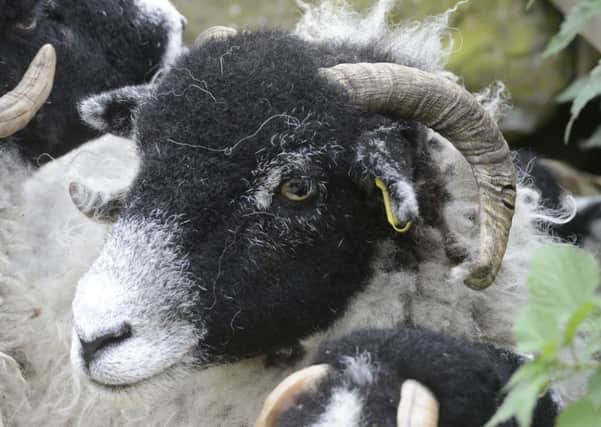Sheep disease has ‘potential’ to infect humans, scientists claim


The disease, scrapie, is similar to variant CJD (Creuzfeldt Jakob Disease) that spread from cows to humans through infected meat and caused a major scare in the 1990s.
Researchers have now found evidence linking the infectious agent behind scrapie with sporadic CJD (sCJD), a fatal human disease whose cause has never been established.
Advertisement
Hide AdAdvertisement
Hide AdWhile the scientists leading the new study have stressed that they have no proof that eating mutton or lamb infected with scrapie can lead to sCJD in humans, they have found that tests on humanised laboratory mice show that scrapie is potentially capable of infecting humans. They have also found that the way the infection spreads in the brain is identical to that seen in cases of sCJD.
The scientists, led by Dr Olivier Andreoletti, from the National Veterinary School of Toulouse in France, wrote in the journal Nature Communications: “Our data on their own do not unequivocally establish a causative link between natural exposure to sheep scrapie and the subsequent appearance of sCJD in humans.
“However, our studies clearly point out the need to consider this possibility.”
Both scrapie and different forms of CJD are caused by rogue misshapen prion proteins - proteins that are active in the brain. Normal prions that come into contact with the defective versions are changed too and turn “bad”. In this way the infection spreads, inflicting terrible damage to the brain.
Advertisement
Hide AdAdvertisement
Hide AdVariant CJD first emerged in 1996 and was shown to be the human version of the cattle disease bovine spongiform encephalopathy (BSE).
The prions that caused the disease spread to humans in contaminated beef - especially burgers, cheap cuts and pies - and some cases were also traced to blood transfusions from infected donors.
However, fears of a catastrophic epidemic with thousands or even millions of people dying never materialised. To date, 177 UK deaths from vCJD have been recorded, most occurring in the late 1990s and early 2000s.
The mice in the new study were the same strain previously used to confirm the ability of BSE to break the species barrier and infect humans.
Advertisement
Hide AdAdvertisement
Hide AdIn the tests, the animals had scrapie prions injected straight into their brains. The authors point out that prion infection via non-direct routes, such as eating contaminated tissue, can have an incubation period running into decades.
They added: “Furthermore, it is crucial to bear in mind that sporadic sCJD in humans is a rare disease and that scrapie has been circulating in small ruminants populations used for food purposes for centuries.
“Consequently, it is our opinion that even if a causative link was established between sheep scrapie exposure and the occurrence of certain sCJD cases, it would be wrong to consider small ruminant (prion) agents as a new major threat for public health.”
There were 83 recorded deaths from sCJD in the UK during 2012, latest NHS figures show. Most cases occur in older adults aged 45-75.
The most common type of CJD, sCJD it is still very rare, affecting just one or two in every million people each year in the UK.